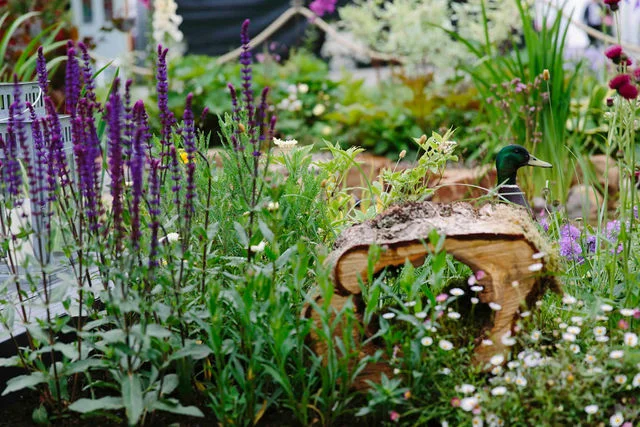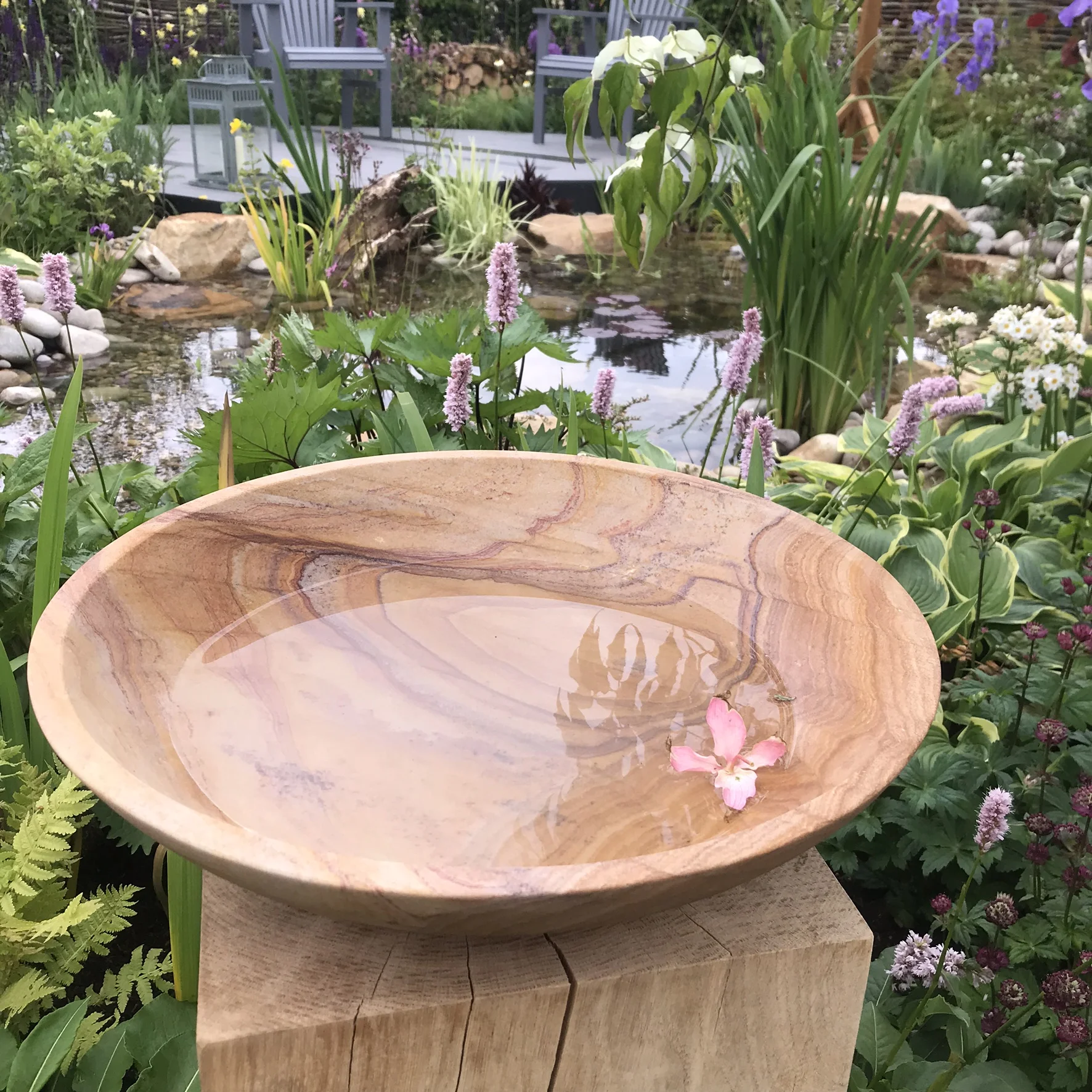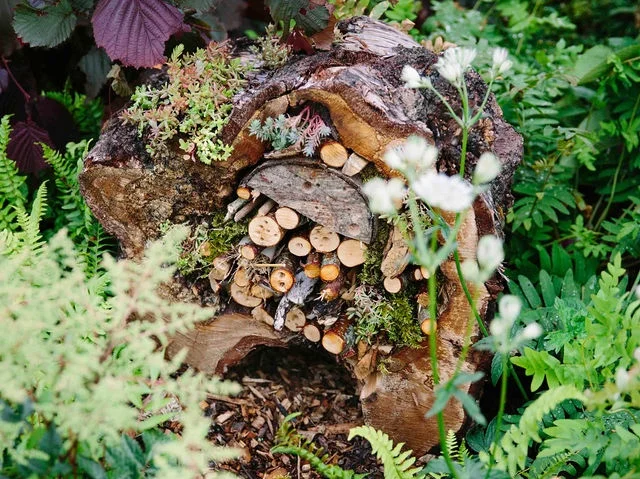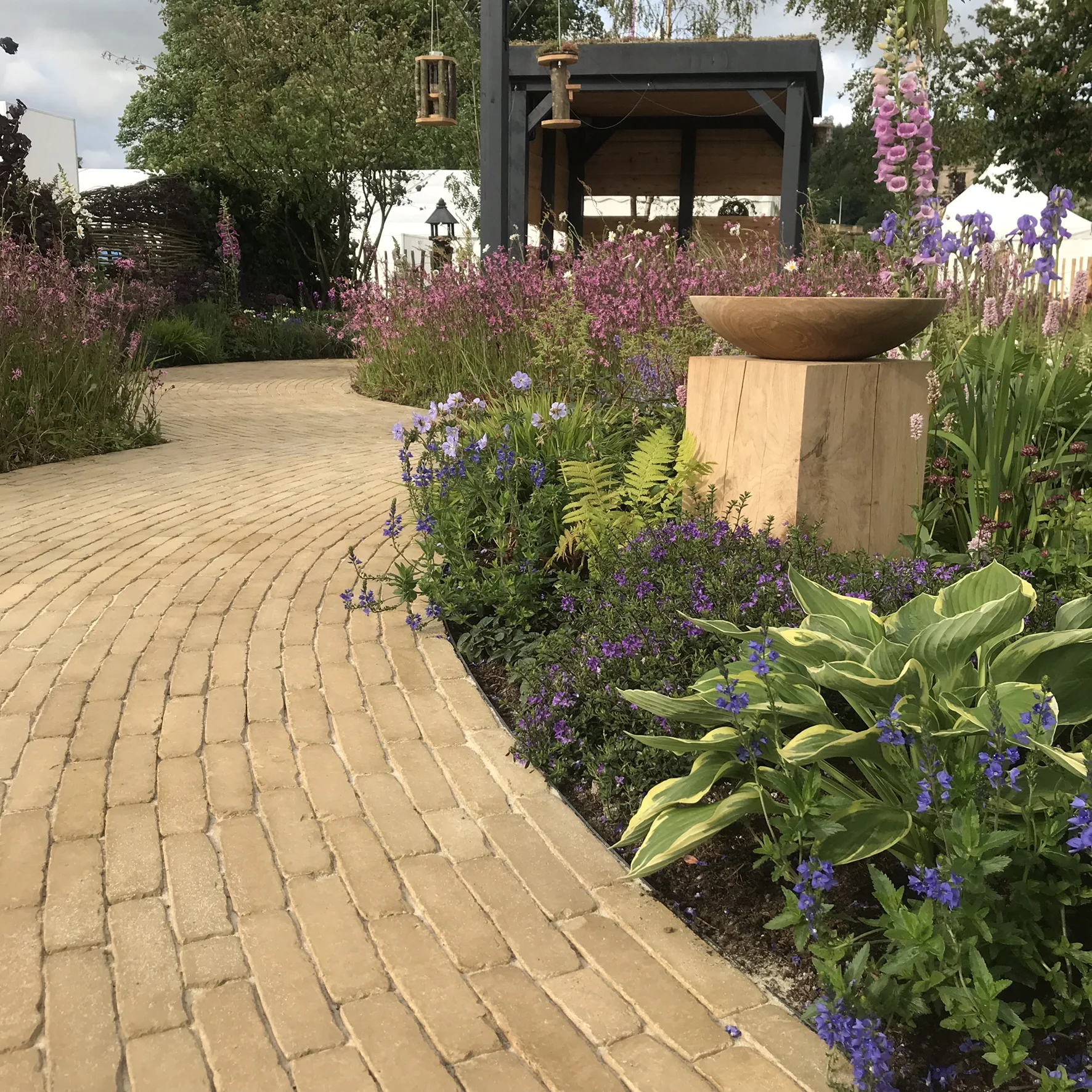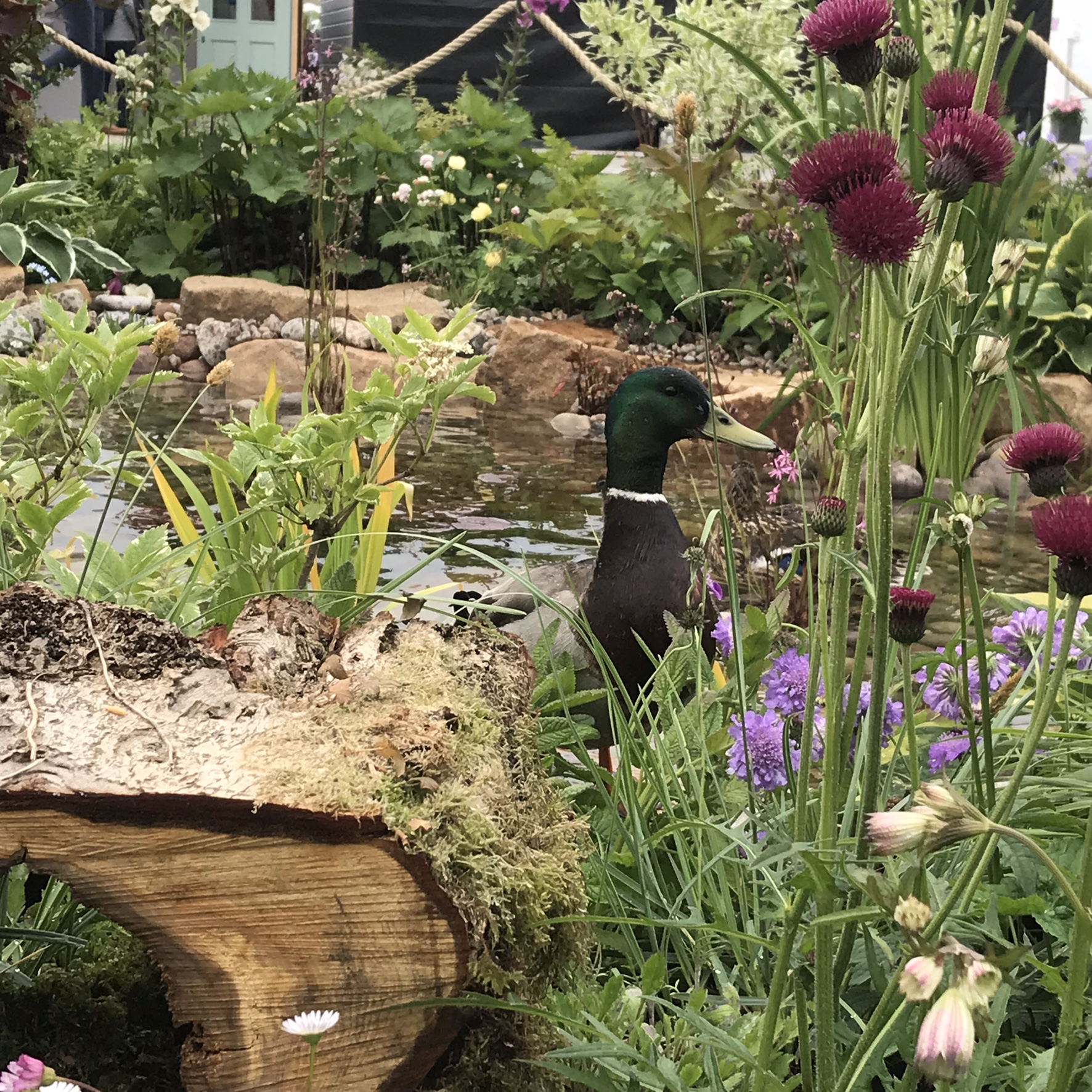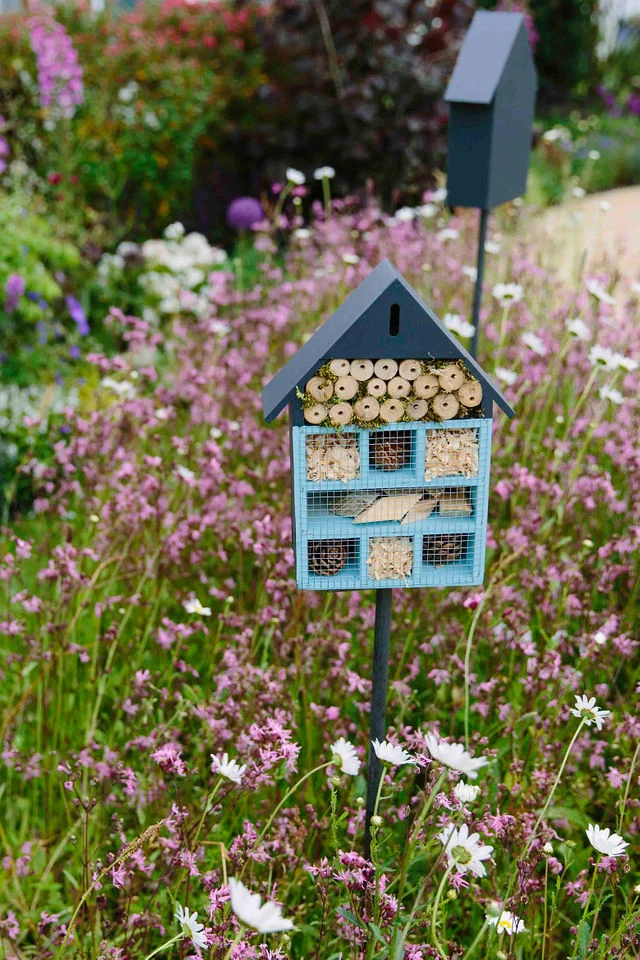The RHS Garden for Wildlife showcased different habitats for invertebrates, birds, reptiles, amphibians and small animals that can easily be incorporated into any domestic garden.
The garden included a small pond with sloping pebble bank and marginal planting, nooks and crannies within rocks and log piles, densely planted with wildlife friendly garden plants including wildflower meadow, nectar rich flowers, trees and hedgerow plants, sedum roof and areas of long grass to help attract a diverse range of creatures.
A myriad of simple ‘add-on’ ideas also featured in the garden including bee hotels, bug houses, bird boxes, baths, feeders and compost heap.
Bird hide inspired garden shelter
“Sometimes we need to relax our expectations of garden management and come to appreciate the slightly less controlled border or patch of grass. Leave the cutting back of seedheads and stems till early Spring, let some lawn grow long or sow some wildflower seeds; your wildlife will love it.”
“The inspiration for Wild Woven was to embrace many different habitat types and show these within a modest sized garden space with a mix of ideas for visitor’s to take home whatever the size of their garden or budget.
Plants are key, the more variety the better as you will inevitably increase the attraction of your garden to wildlife. Trees, hedges and shrubs play an important structural role in design but also offer shelter, a food source, roosting and nesting sites for birds. Nectar rich flowers, especially across the seasons, will draw in a range of pollinating insects, from early flowering trees like Amelanchier to late flowering perennials like Asters. You can easily add bee houses, insect hotels, bird boxes or even a simple pile of logs will encourage creatures to take shelter.”
The RHS Garden for Wildlife was won by competitive tender. It was not a judged garden but a ‘Feature Show Garden’ created to inspire visitors to the show to help create their own wildlife friendly spaces and features.
